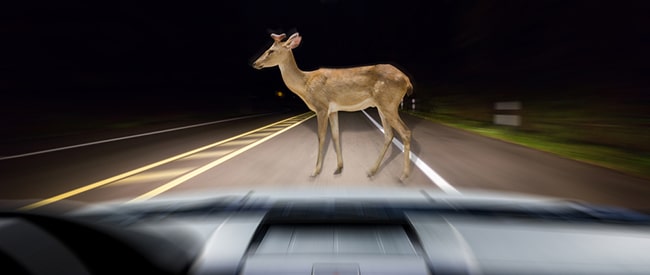Night Vision Windshield Repair and Replacement in Phoenix. Up to $275 FREE


At Pinnacle Auto Glass, we can replace windshields with any kind of night vision system for customers throughout the Phoenix Metropolitan Area.
This page explains what automotive night vision systems are, and what happens when you need an auto glass repair and your vehicle has a night vision system.
For a free quote for a night vision windshield replacement in Phoenix, call Pinnacle Auto Glass today at 480.907.3982!
What is Automotive Night Vision?
A night vision system in a car is a system that uses sensors to identify objects in the road ahead that are not easily seen in the light from the headlights.
Some of the common objects a night vision system can help keep the driver aware of are animals, other vehicles and people in the road ahead.
Modern automotive night vision systems can have sophisticated algorithms to determine if objects ahead are living or moving to alert the driver of potential driver.
How Does the Night Vision System in My Car Work?
Night Vision is an Optional Feature
Night vision systems are normally an optional feature in most vehicles, so the best way to confirm if your vehicle has a night vision system is to check the user manual.
How Does My Car "See" at Night?
Night vision systems are powered by infrared or thermal sensors that can detect heat in objects.
The system's computer takes the heat information the sensors detect in objects ahead and uses it to create an image that's shown to the driver.
Objects with more heat, like animals or people, stand out clearly in night vision images.
Where Do I See the Night Vision Images?
There are 2 common places where night vision system images are shown to the driver:
- In the dashboard, either ahead of the driver or in the center dash area with the audio/navigation/HVAC controls.
- In a heads-up display projected onto the windshield in front of the driver.
What Are the Benefits of Night Vision in My Car?
Night vision systems are intended to help the driver be aware of objects in the road ahead when conditions make it difficult to see.
Night vision systems are not only helpful at night, but also in low-light conditions like heavy rain or snow.
These systems do a great job of identifying common road hazards like pedestrians, deer and other animals, and stuck or damaged vehicles.
By alerting the driver to hazards like these in the road ahead, night vision systems give the driver more time to brake or prepare to safely navigate around them.
The 2 Different Types of Automotive Night Vision Systems
There are 2 main types of night vision systems in modern vehicles:
Active Car Night Vision
- Uses infrared-radiation (IR) sensors to detect objects
- Able to create life-like images
- Shorter range (about 600 feet ahead of vehicle)
- Range can be affected by weather conditions
- Can display roads and buildings on the side of the road if they're in the IR spectrum
Passive Car Night Vision
- Uses thermographic cameras to detect objects
- Images aren't as clear
- Longer range (about 1000 feet ahead of vehicle)
- Most common kind of night vision system
- Unreliable in hot temperatures (over 98 degrees)
Fixing Your Glass with a Night Vision System
There isn't a standard place where night vision sensors are mounted on vehicles.
If your vehicle has a night vision system and you need to fix its glass, then the sensor may be mounted in the windshield. If so, then you may need a new sensor or wiring when we replace your windshield.
When you call Pinnacle Auto Glass to set up your service appointment, simply let your customer service representative know that you have a night vision system and we'll be able to get the proper replacement parts!
Other Windshield Technology Types
Click a link below to learn about the other types of windshield technology.